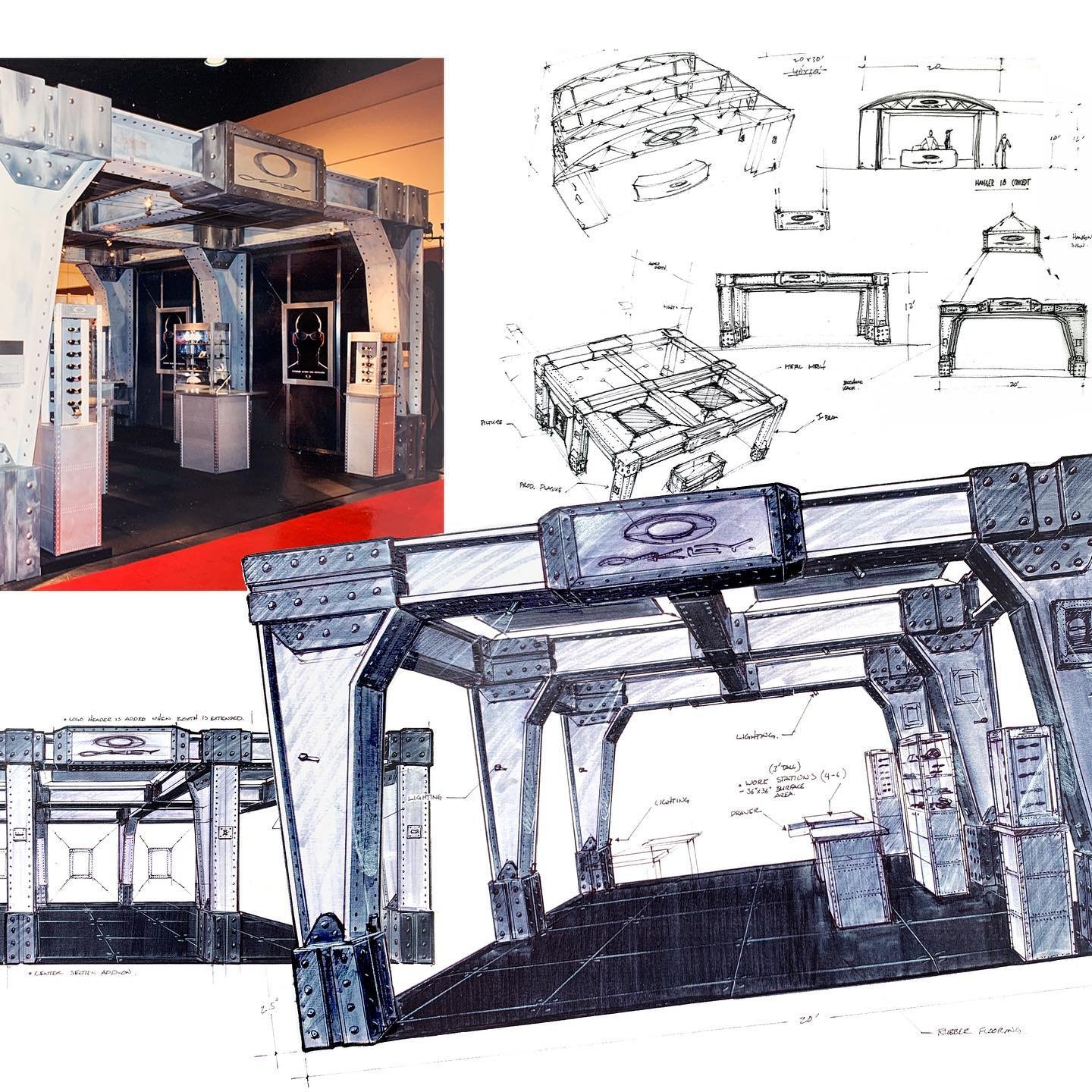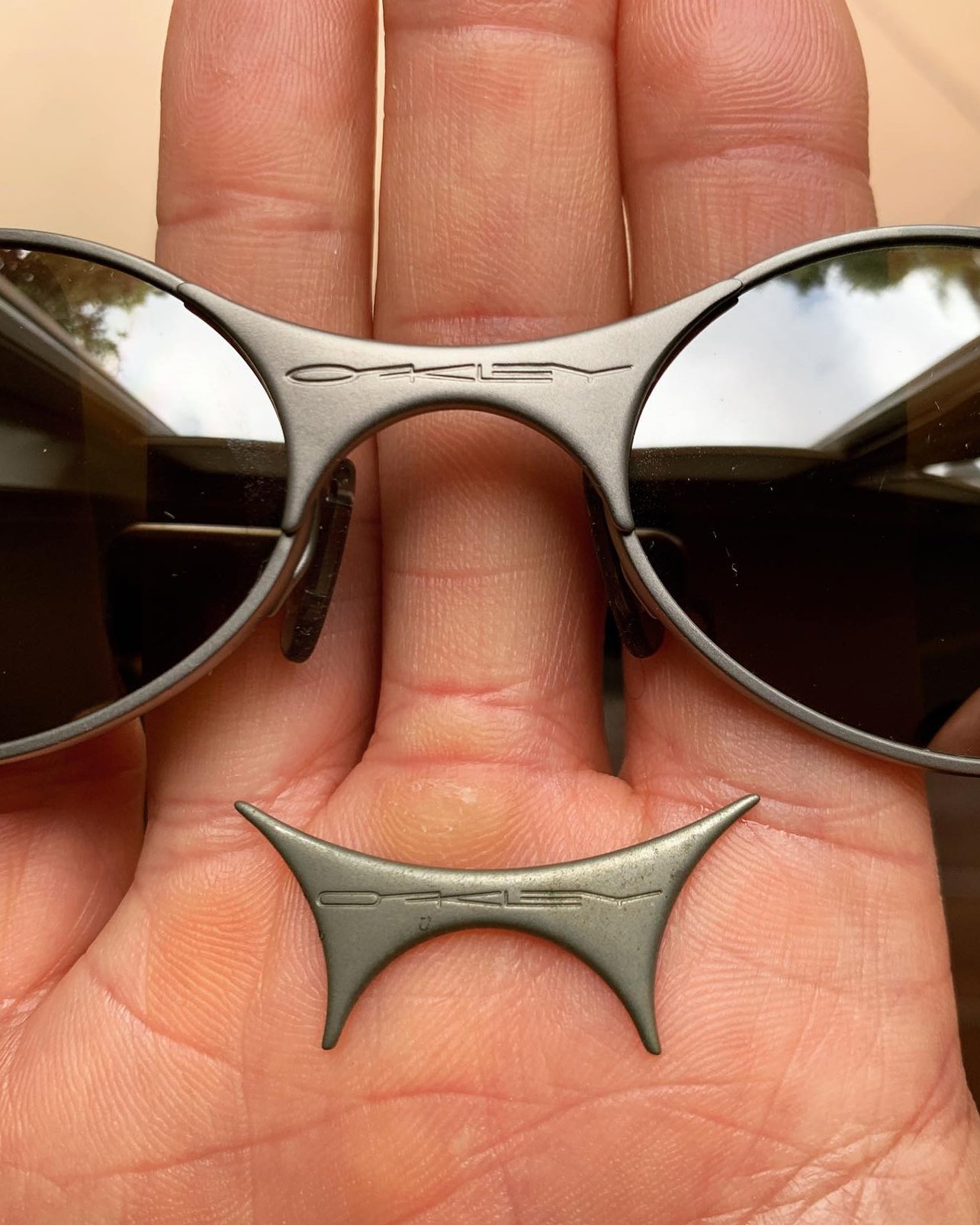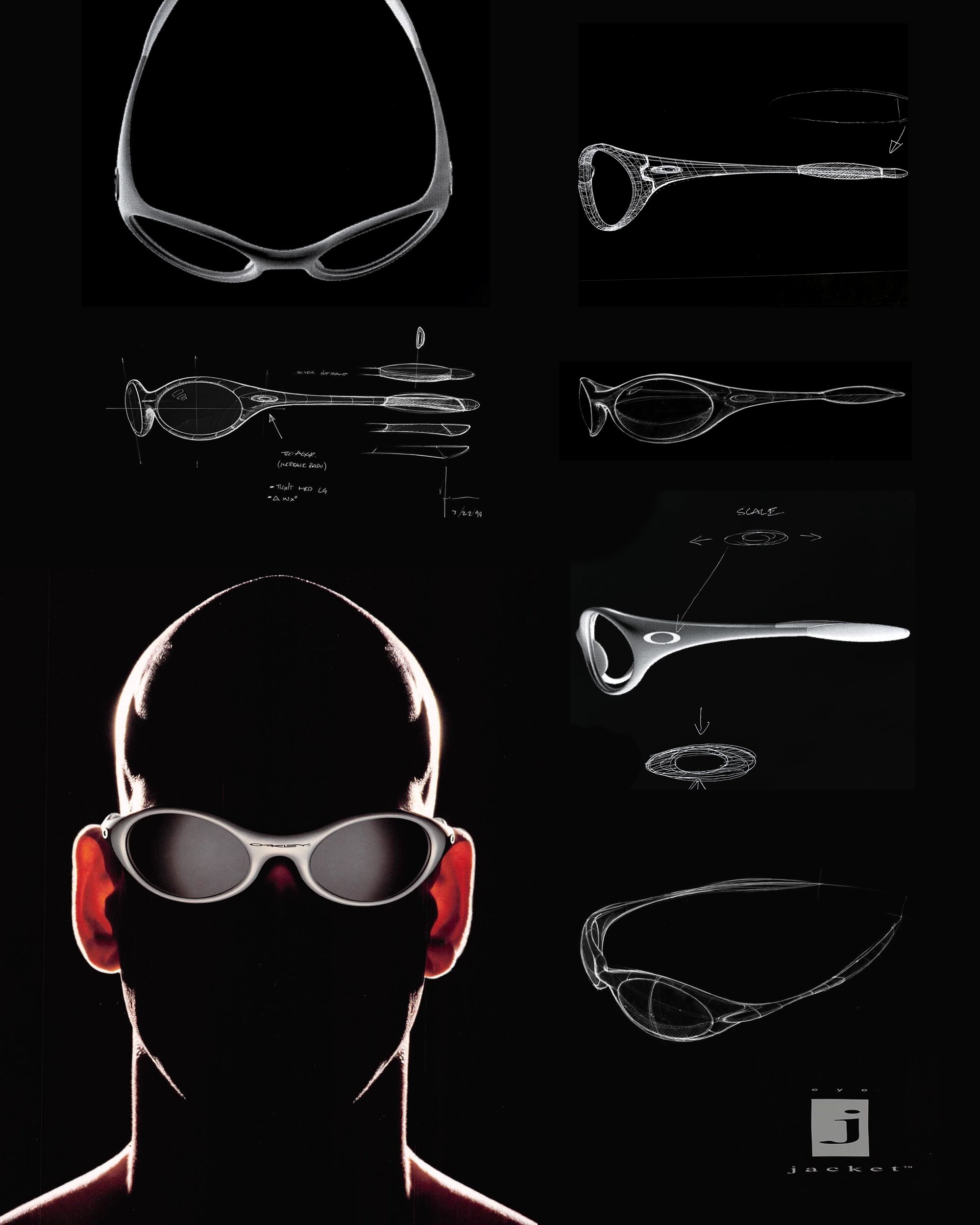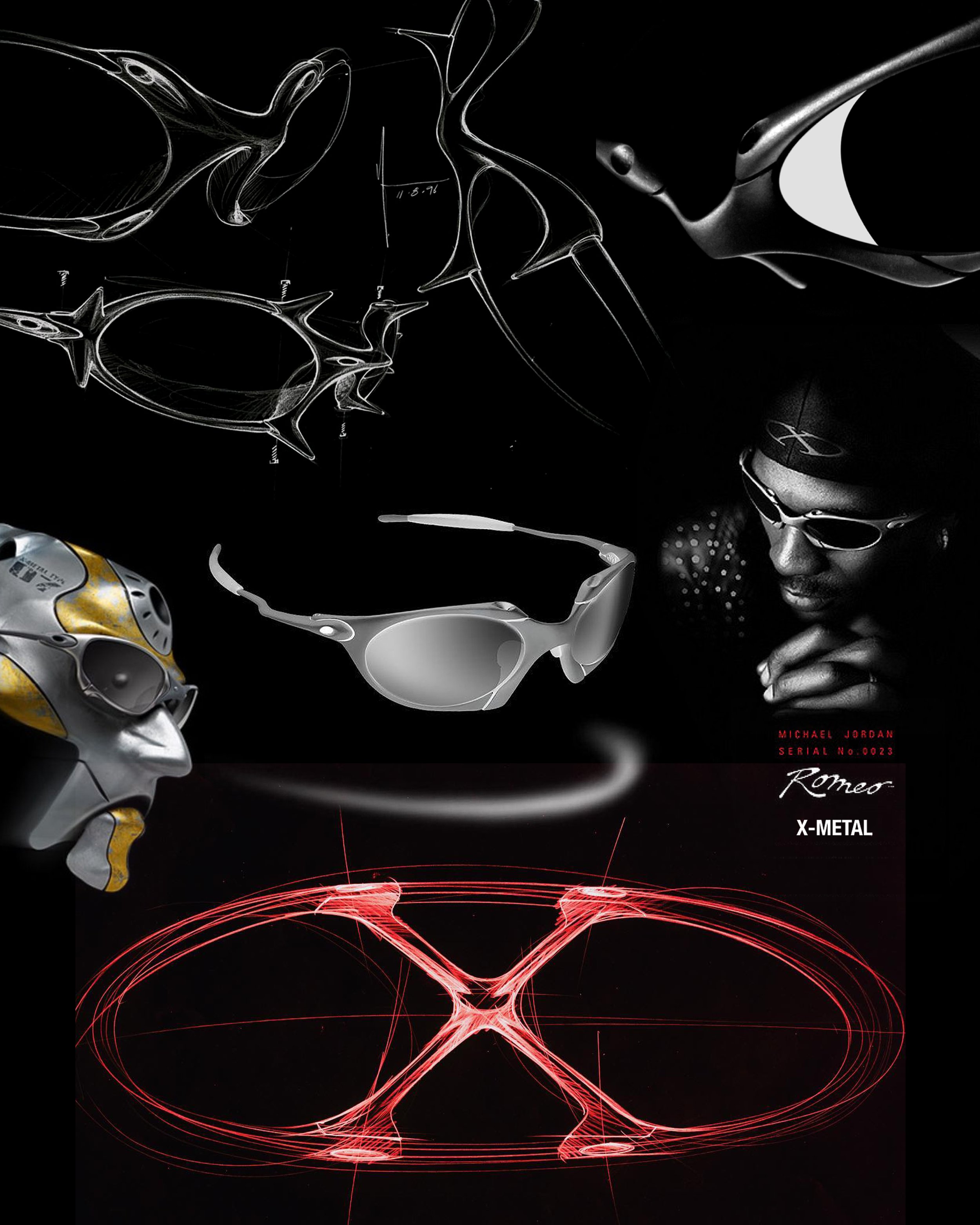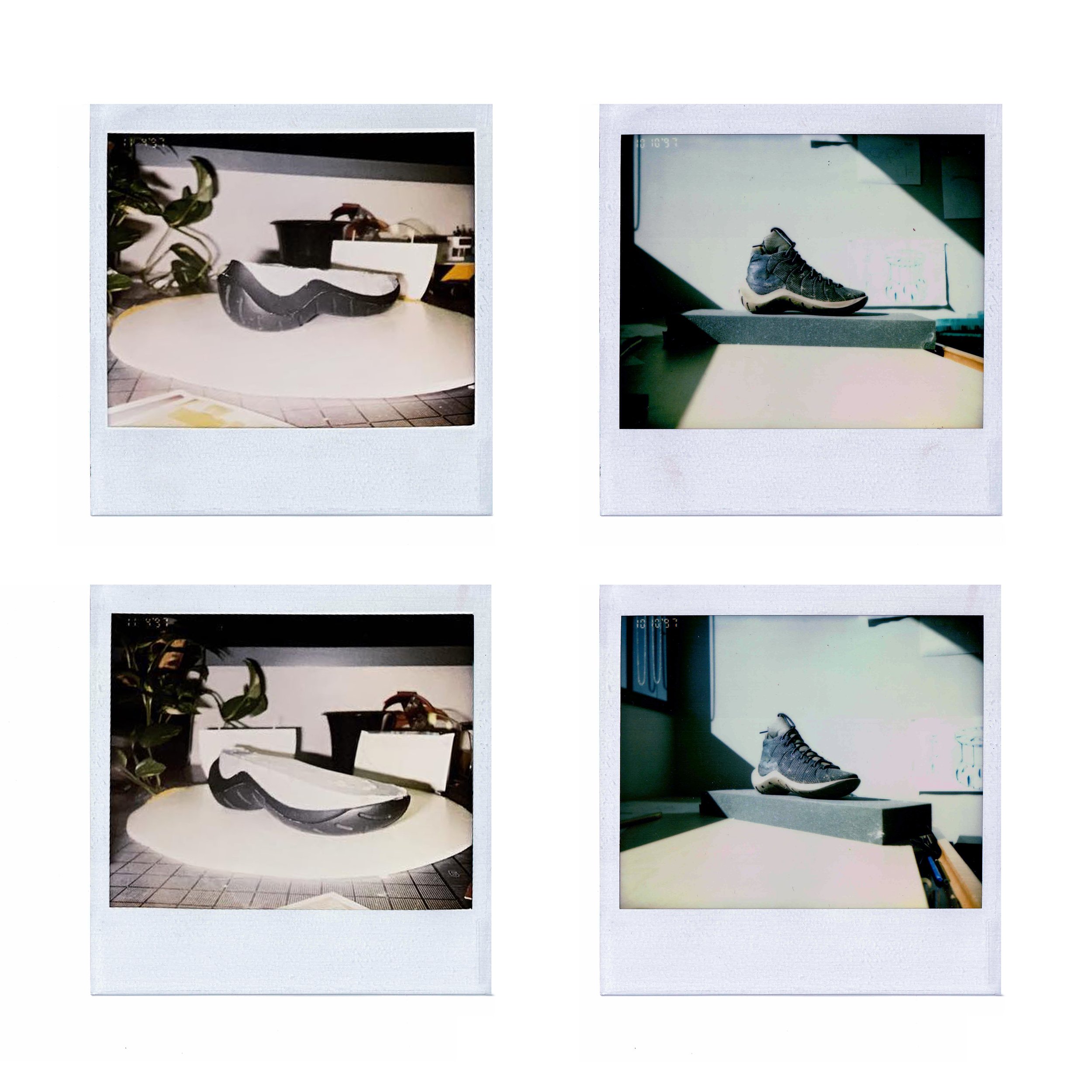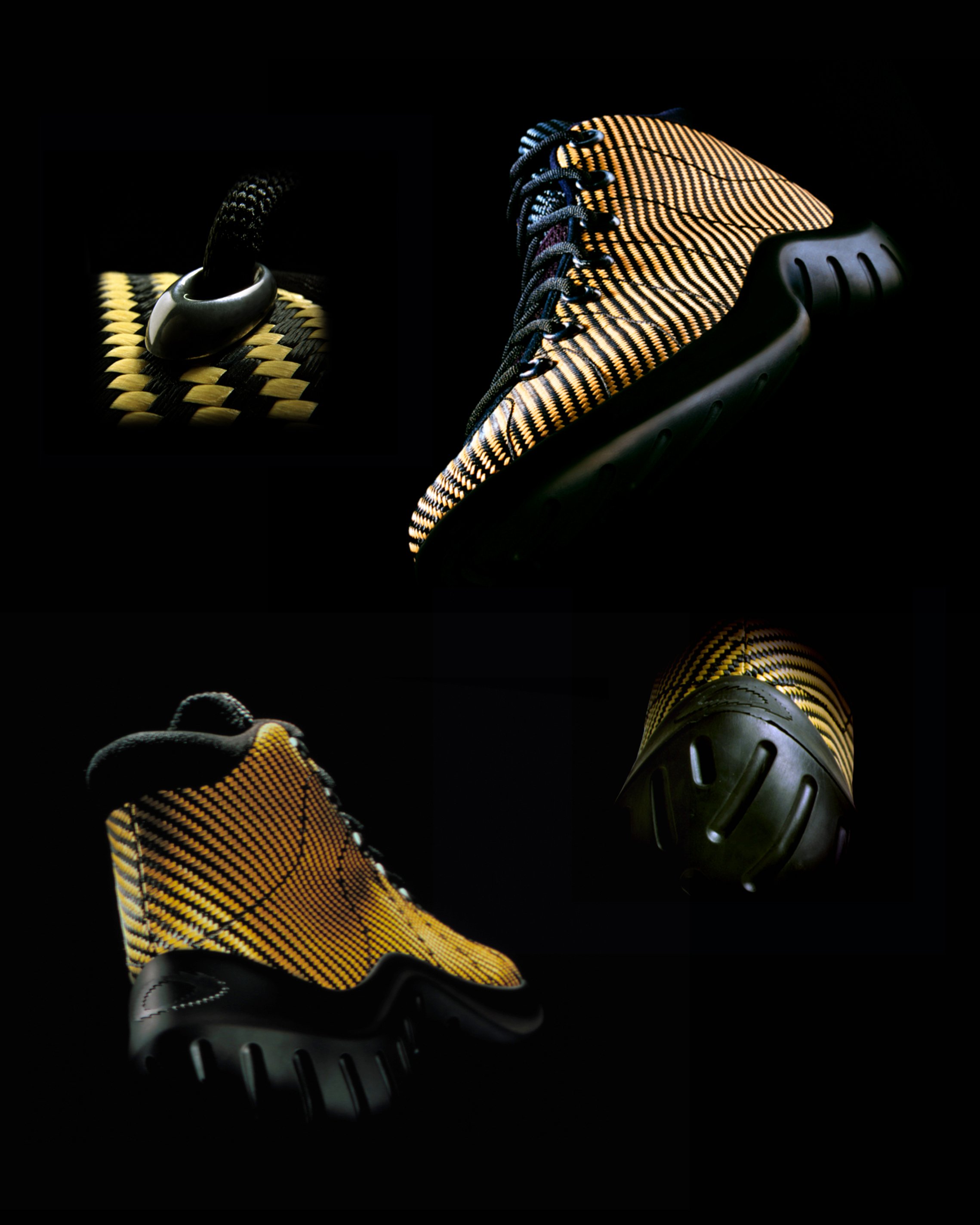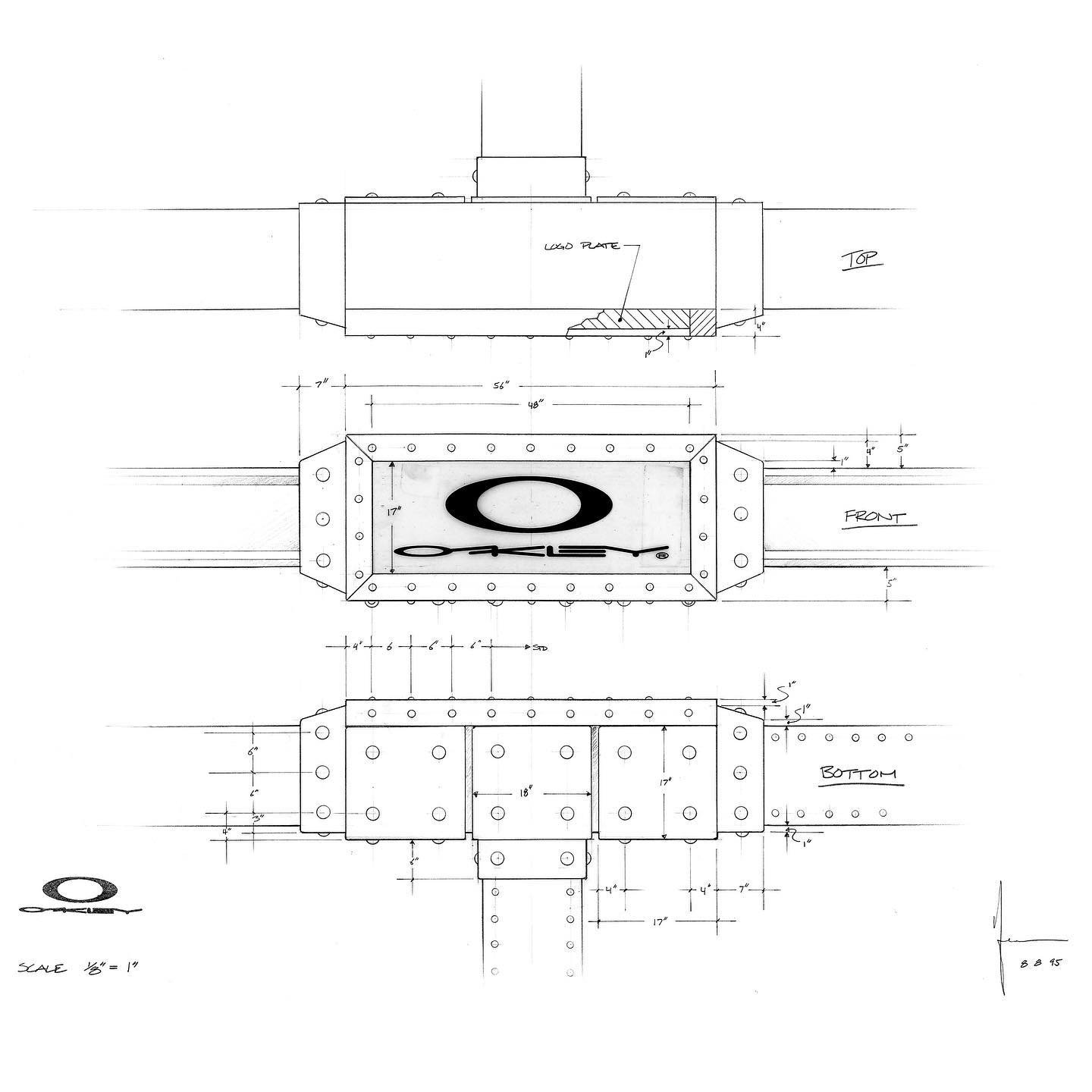Between The Lines 013: Oakley
The Search for Something Special with Peter Yee
Words: Siân Toolan
Peter Yee discusses his twenty-five year tenure with the performance powerhouse Oakley, the importance of a working environment and the magic of good design...
The last decade has undeniably dissolved the boundaries between sportswear and luxury, between performance and lifestyle; it’s a modern marriage that has dominated the broader field of fashion, not only in terms of footwear. Resurged on the runway, splashed across the faces of the celebrity elite, and peppered into the functional archive pages that have come to shape current consumer tastes, there’s a renewed demand for performance-driven gear and performance eyewear, in particular. Whilst there’s usually one brand to thank - we’re looking at you Balenciaga - eyewear had already captured the cultural zeitgeist of the 90s and 2000s by virtue of a magic little brand called Oakley; a brand that preempted the popularity of performance wear and pioneered the aesthetics and technology that defines it today.
The story of Oakley began in 1975, the product of one mad scientist, Jim Jannard, a $300 investment and his dog, Oakley. A motocross enthusiast and pharmaceutical drop-out, Jannard redesigned the slippery handles of motocross bikes with a revolutionary rubber material, Unobtanium, and the resulting “The Oakley Grip”. From its very beginning, the brand asserted its concern with innovation; identifying problems, creating solutions and “wrapping those solutions in art”. In the years that followed, Jannard graduated from handles to dirt riding goggles, to ski goggles to sunglasses, not only transforming the brand, but the field of performance eyewear altogether. In 1984, Oakley introduced the Factory Pilot Eyeshades that borrowed from the wide periphery of goggles to create an entirely new silhouette, now more commonly known as wraparounds. By the mid-90s their shades were everywhere. Oakley had accelerated from a garage laboratory to a global phenomenon with products that visually and technically exceeded the marketplace, all with the help of freshly graduated Peter Yee.
Oakley Brand Identity & E-Wire Logo Application
Maintaining their tight grip of the market would require consistent innovation, straying away from the predictability of the eyewear industry, so it was just about time they hired a designer. The first industrial designer to be brought into Oakley, with a distinction from California’s prestigious ArtCenter, Yee’s vision came to define the work ethos and design language of the brand for the next two decades. “Before, everything was done by Jim and his home grown team” recalls Yee. Whilst Yee arrived at the brand with little understanding of optics, outside of his own sunglasses collection, he brought an understanding of design tools and exactly how to push them. This balance of ignorance and knowledge, he believes, to be his “secret strength; the secret sauce to success”. Taking inspiration from the automotive industry, the human form and the brand’s archive, rather than the work of competitors, Yee was able to create products that, at times, seemed impossible. In 1993, he released his first design, initiating the Zero Collection and, just a year later, Yee introduced one of Oakley’s most notable frames to date: the Eye Jackets.
Oakley Eye Jacket Campaign & Early Sketches
The Eye Jackets, with their bold, oval silhouette were “a catalyst for change of aesthetic at the time.” Prior to their release, Oakley’s portfolio (and eyewear everywhere) was relatively linear, an abundance of geometric designs with a lot of straight lines, in part due to the software of the time and, also, the limited experience of the team. The surfaces of the Eye Jackets featured “progressive, accelerating curves”, borrowing the aesthetic language and fluid dynamics of race cars and aeroplanes. As a result, the design is swept and beautiful, while being lighter and more aerodynamic. Additionally, as the first pair of Oakley sunglasses designed using CAD software, it was the first frame that incorporated the hinge mechanism within the footprint of the frame with “a faceted, castled hinge line”. This feature is not only more of an interesting visual experience but offers a stronger unit join that locks into one another, like a jigsaw. With an equally sleek campaign, featuring Michael Jordan, the brand captured the futuristic outlook of the era whilst altering the future of eyewear forever.
Oakley X-metal Romeo Campaign & Early Sketches
One of Yee’s greatest feats came in the form of the experimental X-metal Romeo. Released in 1997, the sunglasses were envisioned as the “ultimate eyewear”, constructed entirely of cast titanium so “when we’re nothing but bones and dust, the frames will still physically be around” explains Yee. To counteract the rigid frame, the design was fitted with replaceable compressible couplers to increase flexibility and aid upkeep. The design further boasts an interchangeable “nosebomb” and adjustable shock absorbers at the stem for a tailored precision fit. Regardless, Yee cites the defining feature of the glasses as their unique stem, designed with a small, elongated hole. That hole firstly “relieves a little bit of weight”, but more importantly it appears as an abstract render of the brand’s iconic ellipse logo, designed by Yee and, by that time, plastered on car bumpers across America. At $250 per pair - the highest price point to date at the time - the X-metals enabled the company to maintain its stupefying growth rate, whilst demonstrating new material practices and innovative functionality.
“We got a bunch of shoe-manufacturing equipment, and, not knowing how to use it, began to experiment and design naively, questioning traditional methods”
Oakley Shoe One Early Prototype
By 1998, with an unmistakable identity and unforgettable endorsers, Oakley’s presence in the zeitgeist felt far greater than eyewear. With Jannard itching to expand, the brand forayed into footwear and watches within a year. Shoe One began, alike every other product, as “more of a philosophical discussion of a shoe you've never seen before. It wasn’t to look like anything else.” Yee recalls being brought into to design specific components, “we got a bunch of shoe-manufacturing equipment, and, not knowing how to use it, began to experiment and design naively, questioning traditional methods”. The end result was a woven kevlar upper with a kevlar impregnated three-point contact outsole. Polarising for its time - with its concept colour a black and yellow weave - the shoe’s genetic code was inherently Oakley, refraining from parallel lines and options for a flowing silhouette; “an extension of the foot, really”. It may not have boasted commercial success at the time, but it was a testament to exactly what Jannard and Yee’s team could adapt to and, for outdoor enthusiasts and collectors alike, the design has become a serious footwear grail.
Oakley Shoe One
In the same year, Yee designed Oakley’s first watch: the iconic Time Bomb. The Time Bomb rocked the traditionalist watch market with its alien silhouette, rounded glass face and undeniable novelty. It’s that specific 90s vision of the future; finished in the same muted grey of the Playstation 1. Nevertheless, the Time Bomb was inspired by the visual language of Oakley’s own Pro-M Frame. Sculpted by hand, the watch acts a testament to creativity as an analogue process. “Creativity is still analogue” explains Yee, whether moulded, or drawn digitally, design still comes from the hand or from people, at the very least. A crucial component of Oakley’s story is its epochal logo; a logo that defined an era of fluid aesthetics and, was in fact, designed back and forth via Fax machine. Whilst its difficult to imagine now, much of the brand’s success is this ability to balance traditional, human-centred practices with the available and latest technology.
Oakley Time Bomb Development
From a limited edition gold Time Bomb - rumoured to cost $25,000 - for Michael Jordan to Tom Cruise’s X-metal Romeos in ‘Mission Impossible 2’, Oakley maintained its momentum from the ’90s into the new millennium through coordinated marketing efforts and famous fans. Yee’s designs graced the faces of Dennis Rodman, Robin Williams, and Robert de Niro alike, but the brand’s success was not solely to do with sports marketing nor celebrity endorsements. It was Jannard’s unique business model. The brand was careful to limit its sellers - understanding exclusivity via scarcity - and, unlike many brands at the time, Oakley poured its profits straight back into its research and development. This resulted in the release of some of the wildest, most experimental projects the eyewear industry had ever seen, many of which were designed by Yee.
“Certainly, during my time, the lion's share of the effort was going after these brave things”, and that’s exactly how Oakley’s projects felt: unafraid. One of Oakley’s most defining moments of the early aughts was the debut of Yee’s OVERTHETOP at the 2000 Sydney Summer Olympics. You might recognise OVERTHETOP from ‘Spy Kids 3’; a bizarre albeit ergonomic design that featured a metallic frame sculpted over the dome of the head. It was not intended to be parodic or conversational but rather, it was performance-focused, designed “to minimise pressure points”. For Yee, his nonconformist aesthetics and approach was not to garner a reaction - as many designers do today - but rather to use the language of other areas of design to advance the field of eyewear in the most artistic way. In in his time at Oakley, he has designed magnitude of now patented styles, including quite possibly the most expensive sunglasses ever made, the C-Six priced at $4,000. Crafted from over 80 layers of stacked carbon fibre and CNC milled, the endeavour may have embodied ludicrous luxury but, more importantly, it was an insane engineering feat that demonstrated what could be achieved without financial restrictions.
Oakley Racing Jacket & Ellipse Logo Stem Development
“Our objective was always to make an impact; to do what no one else has done”, ultimately to be special. These special projects, or “design flexes”, were not necessarily designed to sell - though many did - as Oakley’s advances were fed back into its more commercial and accessible product lines or the company as a whole. Jannard “was a true gambler - willing to put it all on the line to win the reward” explains Yee. “You can’t get something amazing or special without being brave, without risking failure” and this approach was a crucial part of Oakley’s DNA, implemented from the top down. This unconventional methodology naturally bread innovation, providing its designers with a fun, free-flowing workplace where trial and error, and sometimes failure, is part of a product’s journey. Yee became Vice President of Design in 2011 and upholding this environment was crucial to ensuring every designer could do their best work. Perhaps that’s the recipe for success, and for Oakley’s discernible specialness.
Oakley Box Development & Michael Jordan feat. X-metal Romeo
It’s rarer than you’d think, for a brand to remain concerned with its working approach as it expands on a global scale, and it’s equally rare for a brand to operate both conceptually and commercially to such success. Nevertheless, this success has a lot to do with operating at the in-between; at the intersection of niche and mainstream, of analogue and digital design, of human-centred and high-tech, of ignorance and knowledge. It’s wizardry, it’s magic, it’s good design. Whilst fashion is fairly cyclical, “it's the things that were actually well done at their time that come back and can be re-appreciated” explains Yee. Good design in the ‘90s is likely good design today and that’s exactly why Oakley has had such success with collectors and a natural resurgence in recent years.
Oakley Structural Detail
Despite leaving the brand in 2018, many of Yee’s designs have been re-released and he has new fans and devout collectors reaching out to him via Instagram everyday. Take a look at the response to the never-released Oakley x BAPE Time Bomb, or better yet, Braindead’s Factory Team Project that’s reimagining Oakley’s footwear archive for a new generation. The brand has provided the frames of reference for Balenciaga’s Swift Oval and Bat Rectangle Sunglasses and even collaborated with Demna for Oakley x Vetements in 2019. At a time when high fashion and performance gear were worlds apart, Oakley undeniably came to define American counterculture and, in doing so, shaped the fluid design language we recognise in performance products today. For Yee, his work at Oakley is defined as the “search for something special”. “If I can go to my grave and that’s on my tombstone, that’s a pretty good legacy” he laughs. Continuing to deliver his magic formula as a designer and consultant to other brands, Yee’s trying (and succeeding) at living that “win-win lifestyle”. Sitting in his home office, his dog at his side, and gazing out at a fresh blue California sky, Peter Yee has created his “optimal environment” and, with it, he will continue to do “his best work”, creating products with an X-metal level lasting impact.

